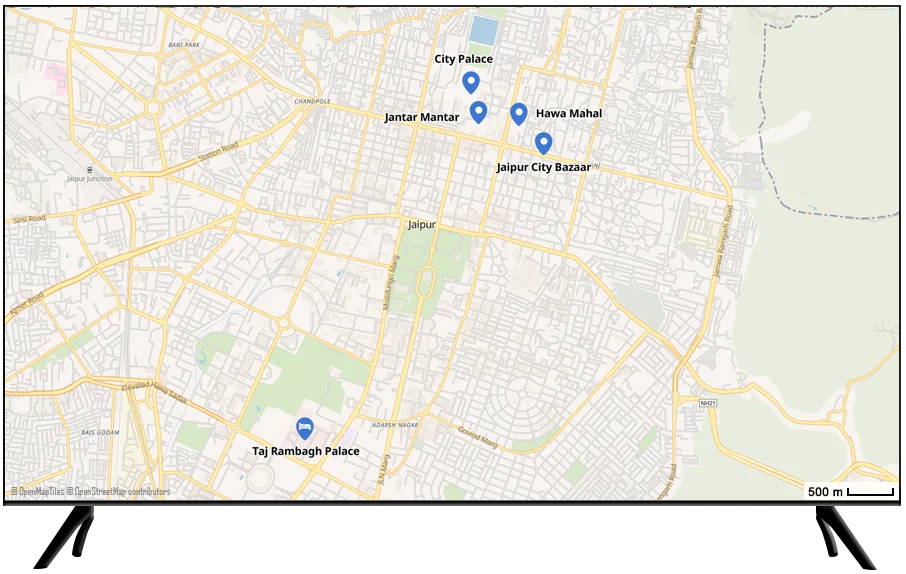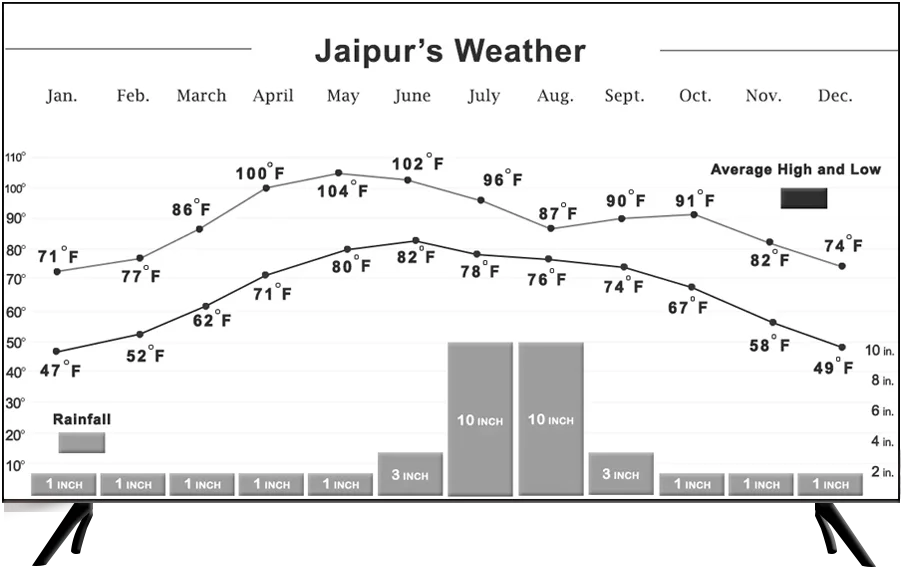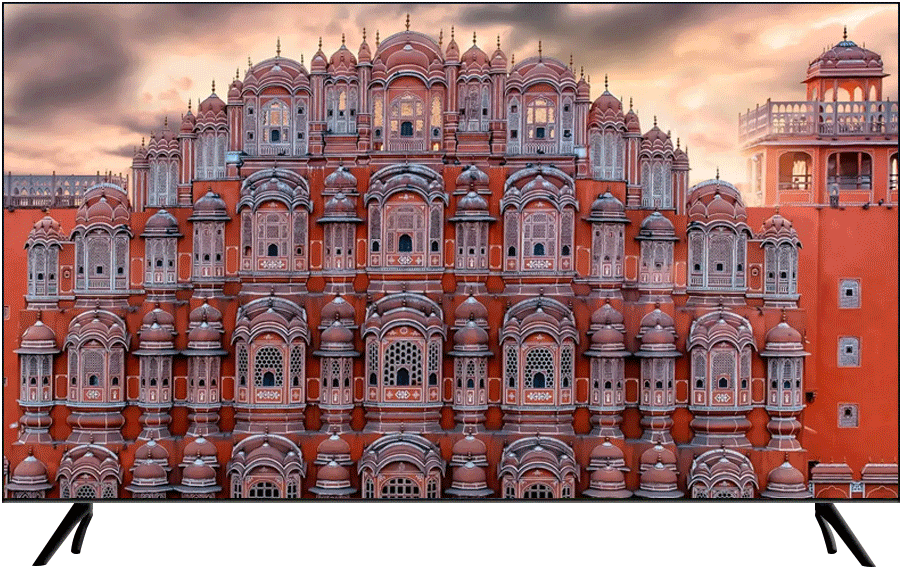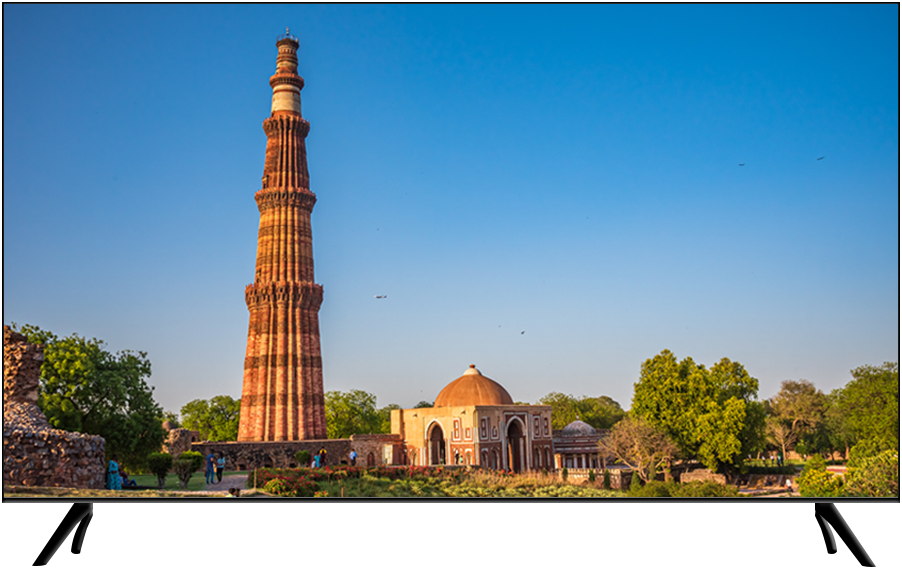



Day 7. Jaipur
Overnight – Rambagh Palace
Pink City. Begin your exploration of the walled pink city of Jaipur. You will start with a stroll through the fascinating main bazaar in the heart of the pink city and watch the locals as they shop for pretty much everything a consumer can possibly want. This atmospheric and crowded bazaar has multiple rows of sellers, starting from the sidewalks and ending at the sometimes centuries old brick-and-mortar stores.
Bazaar Walk. There are rows of busy street vendors with their displays or carts, usually offering fresh produce or inexpensive everyday essentials. Behind them the brick-and-mortar stores sell their wares in sections of the bazaar that focus on similar products. Almost everything under the sun has a section in this massive web of a bazaar, which includes scores of byzantine alleys leading into inner courtyard shops that only the locals know about.
Hawa Mahal. A short walk or drive will bring you to the most photographed of Jaipur’s monuments, the enchanting Hawa Mahal (Palace of the Wind). This intriguing facade was built in 1799 so that the ladies of the court could use its unique windows and observe the bustling bazaar without being visible to people on the streets. The gorgeous design and architecture are supremely functional as they guide prevailing winds over water bodies and through ingenious lattice windows, resulting in naturally cooled chambers for the royals.
For an interesting meal within the Pink City bazaar area, we recommend the excellent cafe at the small historic lodge, The Johri. Locally sourced fresh organic vegetarian cuisine is served here, and the Indian chaat items are recommended. Other options, including fine dining at your palace hotel, are available.
Jantar Mantar. One of the wonders you will visit today is the Jantar Mantar (UNESCO World Heritage Site), an amazing stone observatory that was built by the founder of Jaipur in 1728. Beloved Sawai Raja Jai Singh was passionate about architecture, mathematics and astronomy, and had five stone Jantar Mantar astronomical observatories built in India, all of which allow calculations by the naked eye. The most impressive of these is at Jaipur, where a massive stone sun dial that is accurate to within 2 seconds.
City Palace. Located next to Jantar Mantar is your next experience, City Palace, the royal residence. Members of the family still occupy a part of the palace complex that is closed to the public. You will enter through grand painted entrances and unique courtyards and experience how Jaipur royalty lived and worked over the last 2 plus centuries, and the beautiful artwork and other trappings they surrounded themselves with. You can visit your choice of the palace’s small museums that include displays of local armor, miniature paintings, and a large and impressive collection of ancient royal garments and accoutrements.
Pink City. Begin your exploration of the walled pink city of Jaipur. You will start with a stroll through the fascinating main bazaar in the heart of the pink city and watch the locals as they shop for pretty much everything a consumer can possibly want. This atmospheric and crowded bazaar has multiple rows of sellers, starting from the sidewalks and ending at the sometimes centuries old brick-and-mortar stores.
Bazaar Walk. There are rows of busy street vendors with their displays or carts, usually offering fresh produce or inexpensive everyday essentials. Behind them the brick-and-mortar stores sell their wares in sections of the bazaar that focus on similar products. Almost everything under the sun has a section in this massive web of a bazaar, which includes scores of byzantine alleys leading into inner courtyard shops that only the locals know about.
Hawa Mahal. A short walk or drive will bring you to the most photographed of Jaipur’s monuments, the enchanting Hawa Mahal (Palace of the Wind). This intriguing facade was built in 1799 so that the ladies of the court could use its unique windows and observe the bustling bazaar without being visible to people on the streets. The gorgeous design and architecture are supremely functional as they guide prevailing winds over water bodies and through ingenious lattice windows, resulting in naturally cooled chambers for the royals.
For an interesting meal within the Pink City bazaar area, we recommend the excellent cafe at the small historic lodge, The Johri. Locally sourced fresh organic vegetarian cuisine is served here, and the Indian chaat items are recommended. Other options, including fine dining at your palace hotel, are available.
Jantar Mantar. One of the wonders you will visit today is the Jantar Mantar (UNESCO World Heritage Site), an amazing stone observatory that was built by the founder of Jaipur in 1728. Beloved Sawai Raja Jai Singh was passionate about architecture, mathematics and astronomy, and had five stone Jantar Mantar astronomical observatories built in India, all of which allow calculations by the naked eye. The most impressive of these is at Jaipur, where a massive stone sun dial that is accurate to within 2 seconds.
City Palace. Located next to Jantar Mantar is your next experience, City Palace, the royal residence. Members of the family still occupy a part of the palace complex that is closed to the public. You will enter through grand painted entrances and unique courtyards and experience how Jaipur royalty lived and worked over the last 2 plus centuries, and the beautiful artwork and other trappings they surrounded themselves with. You can visit your choice of the palace’s small museums that include displays of local armor, miniature paintings, and a large and impressive collection of ancient royal garments and accoutrements.

